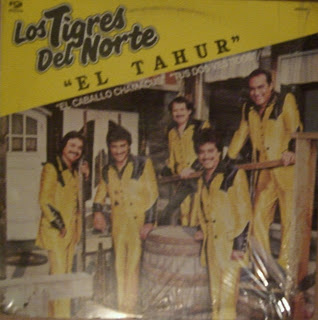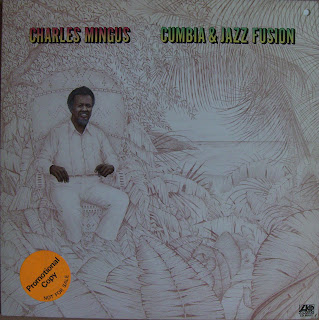
This disc features a couple of interesting tracks and some unusual production techniques like boosting the shakers higher in the mix than the drums and other instruments, but the truth is that what interests me most about this album is its geography. M. Al Azeem, the singer, songwriter, and recording engineer, recorded and mixed all these songs at his studio in Oakland and sent the tracks down to LA to be mastered. Sly Dunbar was the only musician I recognized in the credits, and while I'm not sure where any of the others lived at the time of the recording, it is clear that Azeem had established himself in Northern California. If you recall the Super Jerry album that I posted a couple months ago, you'll remember that that one was recorded in California as well.
I wonder if there is a lot more to this California reggae connection than a few apparently unrelated recordings. A great many reggae giants such as Ras Michael and Scientist call Los Angeles home today, but I'm curious when and how the West Coast became established as a center of reggae production and culture. Whether or not California was a distant corner of the reggae world in 1980, Sly Dunbar's presence on this album indicates that if nothing else, California was on the reggae map.
A separable but related topic that this record brings up is the idea of the circuits in which records circulate. Basically, depending on what part of the world you live in, you have a higher level of access to certain kinds of records while others are harder to find. People living in Paris will have any easier time picking up original pressings of Congolese soukous because of the French-Congolese connection but will have less luck hunting down most norteño recordings than someone living in LA. (Incidentally, I recently discovered that LA is a more significant site in the norteño record circuit than certain areas of Mexico, namely Cancún.) I wonder how widely some of the more underground California reggae records spread: how available they are in Jamaica, on the East Coast, in the UK, and in other more marginal zones of the reggae world? The more we know about this, the more we can deduce about how integrated the California reggae scene was into the international reggae phenomenon.
This point brings me back to the idea of artistic "threads" that I discussed in the Descargas post in November. The more I can chase down threads of California's early reggae scene, the better I will understand the connections between California reggae and reggae from other parts of the world. Of course, this is more a wish than a promise; I have little to no control over the records that I come across, but I'd love to hear more about this from any informed readers in the comments section. Although I haven't heard as much ex-pat reggae that satisfies my listening desires like the homeland stuff does, I'm always interested to learn more about the under-reported activities taking place in the (transnational) margins of this (or any) genre.
M. Al Azeem: lead vocals, rhythm guitar, keyboards, bass, drums, and percussion
Sly Dunbar: drums on tracks 1, 2, 5, 6
Maxwell Beaumont: keyboards, background vocals, and percussion
Mike Gambs: lead guitar on tracks 3, 4
Natty Jahzuff: drums track on 4
Steve Greshin: bass on track 4
Willie T. Killer: drums on track 8
Rashaan: congas and percussion
Raslam Atiba: congas and percussion
Dennis Jackson: alto sax and trumpet
Umlah Sadau: tenor sax, soprano sax
background vocals: Frances Johnson, Belita Ragsdale, Diane Strong, Earlene Rabiu, J.T. Hamond, Maxwell Beaumont and John Smith
Natty Rebel Now by Easy Jams
























